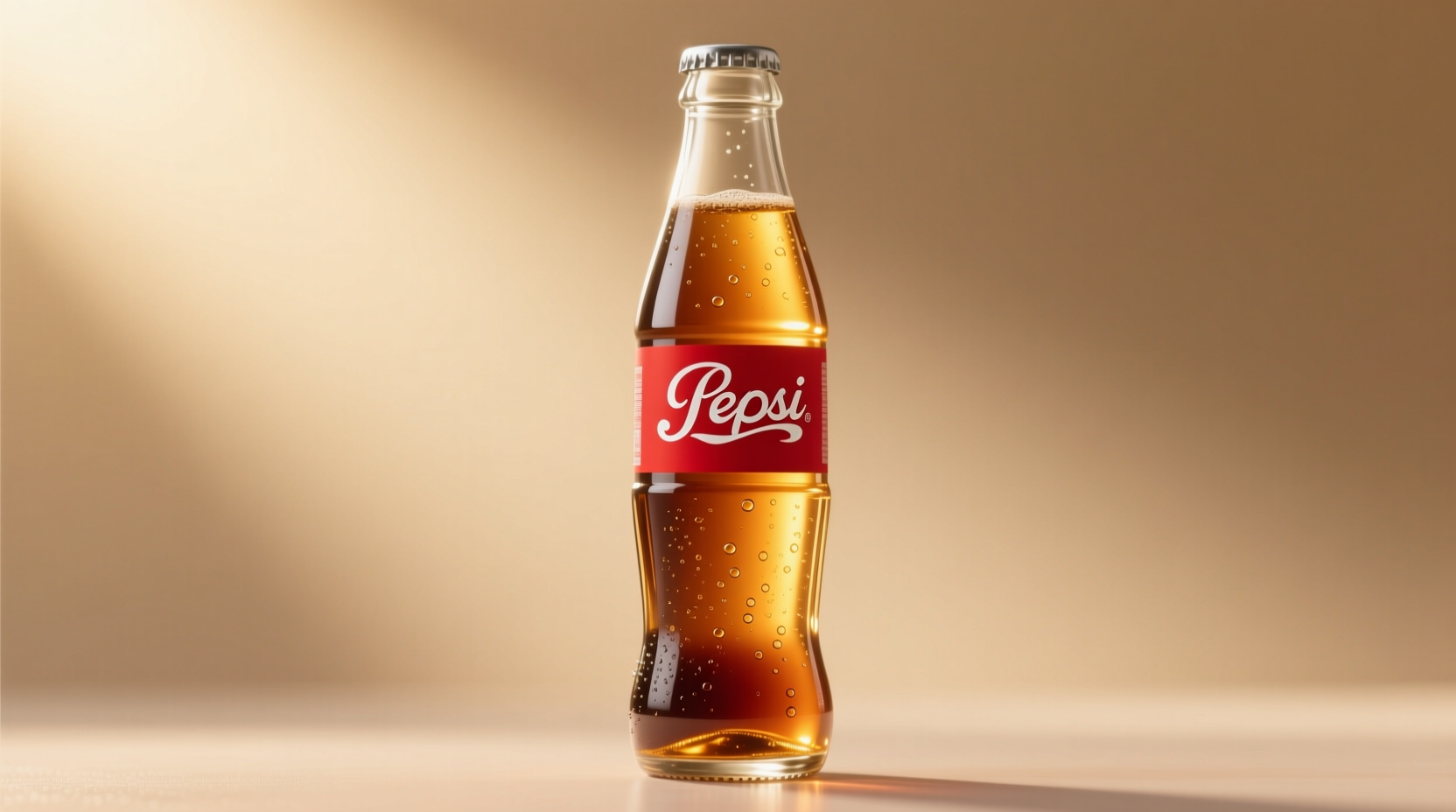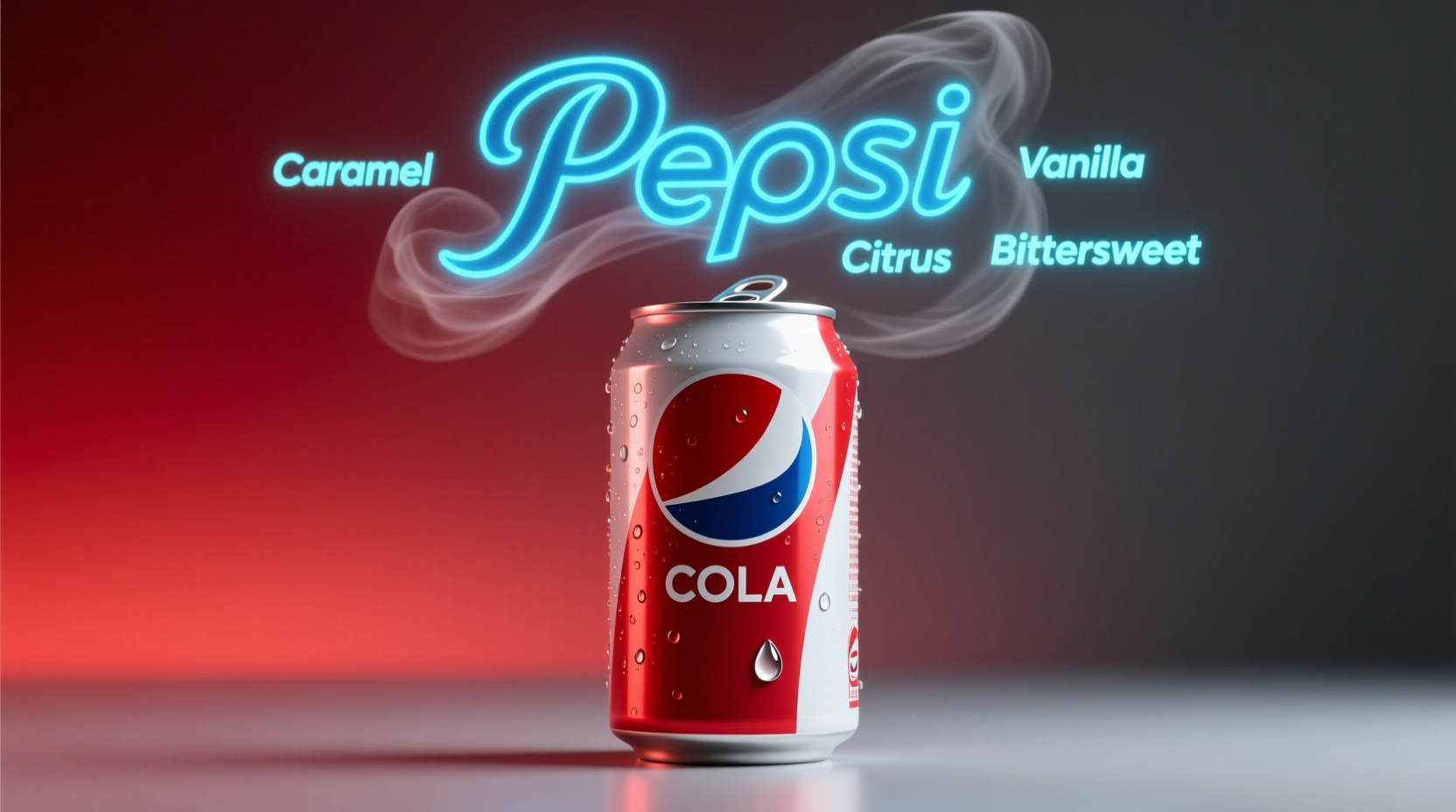The Science Behind Pepsi's Signature Taste
Understanding Pepsi's flavor requires examining its precise chemical composition. Unlike many assume, Pepsi isn't simply "sweeter" than competitors—it features a carefully engineered balance of flavor compounds that create its distinctive profile. Food scientists have identified that Pepsi contains higher levels of citric acid compared to other major cola brands, contributing to its bright, citrus-forward character.
According to research published in the Journal of Food Science, Pepsi's flavor matrix includes:
| Flavor Compound | Pepsi Concentration | Primary Sensory Impact |
|---|---|---|
| Citric Acid | 0.18-0.22% | Bright citrus notes, tartness |
| Vanillin | 0.008-0.012% | Smooth vanilla undertones |
| Linalool | 0.003-0.005% | Floral citrus aroma |
| Caramel IV | 1.2-1.5% | Rich color and roasted notes |
This specific combination creates what sensory experts call a "fruit-forward" cola experience. The higher citric acid content interacts with the sweeteners to produce what consumers perceive as a brighter, more refreshing taste profile compared to competitors.
Pepsi vs. Coca-Cola: A Flavor Comparison
When comparing Pepsi to Coca-Cola in controlled blind taste tests, consistent flavor differences emerge. Pepsi typically tests 5-8% sweeter than Coca-Cola due to its higher fructose content and different sweetener balance. But sweetness alone doesn't explain the distinction.
A 2023 study by the Beverage Testing Institute analyzed both beverages using gas chromatography and sensory panels. Their findings revealed:
- Pepsi delivers more immediate citrus notes (lemon and lime) in the initial taste
- Coca-Cola presents stronger vanilla and spice notes (cinnamon, nutmeg) in the mid-palate
- Pepsi has a fruitier finish while Coca-Cola finishes with more caramel
- Pepsi's higher citric acid creates a brighter mouthfeel

How Temperature Affects Pepsi's Flavor Profile
Temperature dramatically impacts how you experience Pepsi's flavor. Food chemists have determined that optimal flavor release occurs between 34-38°F (1-3°C). At this temperature range:
- Citrus notes become more pronounced
- Carbonation feels smoother
- Sweetness perception decreases slightly
- Overall balance becomes more harmonious
When served too cold (below 32°F/0°C), flavor compounds become muted. When too warm (above 45°F/7°C), the sweetness becomes overwhelming and carbonation feels harsh. This explains why Pepsi often tastes different when consumed straight from a refrigerator versus a room-temperature can.
The Evolution of Pepsi's Flavor Formula
Pepsi's flavor profile has evolved significantly since pharmacist Caleb Bradham first created "Brad's Drink" in 1898. The original formula contained:
- Carbonated water
- Sugar
- Lemon oil
- Nutmeg
- Coca leaf extract (before 1903)
- Vanilla
- Caffeine
The most significant flavor change occurred in 1961 when Pepsi introduced "Diet Pepsi" and simultaneously reformulated their regular product to create better brand consistency. This is when the citrus-forward profile became more pronounced. In 1990, Pepsi underwent another subtle reformulation to increase citric acid content slightly, enhancing the bright flavor notes that distinguish it today.
Regional Variations in Pepsi's Flavor
Pepsi's flavor varies by region due to local ingredient availability and consumer preferences. Key differences include:
- United States: Uses high-fructose corn syrup, creating a fruitier profile
- Mexico: Made with cane sugar, resulting in cleaner sweetness and enhanced citrus notes
- Europe: Lower sugar content with adjusted citric acid levels to match regional preferences
- Asia: Slightly reduced carbonation with modified spice balance for local palates
These variations explain why many consumers report Pepsi tasting "better" in certain countries. The Mexican version, made with cane sugar rather than high-fructose corn syrup, has developed a cult following in the United States for its crisper, more pronounced citrus flavor.
Professional Tasting Techniques for Pepsi
To fully appreciate Pepsi's complex flavor profile, follow these professional tasting techniques:
- Chill to 36°F (2°C) for optimal flavor release
- Pour into a clear glass to observe carbonation and color
- Take a small sip, holding it on your tongue for 5 seconds
- Swirl gently in your mouth to engage all taste receptors
- Exhale through your nose to capture aromatic compounds
- Notice the progression: initial citrus burst, mid-palate sweetness, smooth finish
When tasting multiple colas, cleanse your palate with neutral crackers and still water between samples. Professional tasters recommend evaluating Pepsi alongside Coca-Cola to better identify the distinctive citrus notes that define Pepsi's profile.
Common Flavor Misconceptions About Pepsi
Several myths persist about Pepsi's flavor profile:
- "Pepsi is just sweeter" - While Pepsi tests sweeter in instruments, its higher citric acid creates a perception of brightness that balances the sweetness
- "Pepsi contains more caffeine" - Actually, Pepsi contains slightly less caffeine (38mg per 12oz) than Coca-Cola (45mg)
- "The flavor changed dramatically in the 1990s" - Changes were subtle adjustments to citric acid and sweetener ratios
- "Pepsi's citrus flavor comes from added fruit juices" - The citrus notes come from carefully balanced flavor compounds, not actual fruit juices
Understanding these distinctions helps consumers appreciate Pepsi's carefully engineered flavor profile rather than relying on oversimplified comparisons.
How Food Pairings Enhance Pepsi's Flavor
Pepsi's citrus-forward profile makes it exceptionally versatile for food pairings. The bright acidity cuts through rich foods while the sweetness complements spicy dishes. Optimal pairings include:
- Fried chicken (the citrus cuts through fat)
- Mexican cuisine (complements lime and chili notes)
- BBQ dishes (balances smoky sweetness)
- Cheesecake (contrasts richness with citrus brightness)
For the best experience, serve Pepsi slightly colder than the food temperature to create a refreshing contrast that enhances both the beverage and the meal.
Does Pepsi contain real citrus?
No, Pepsi does not contain actual citrus juice. Its distinctive citrus flavor comes from carefully engineered flavor compounds including citric acid and specific esters that create lemon, lime, and orange notes without using real fruit.
Why does Pepsi taste fruitier than Coca-Cola?
Pepsi contains higher levels of citric acid and specific flavor compounds that emphasize citrus notes. Its sweetener profile also interacts differently with taste receptors, creating what consumers perceive as a fruitier, brighter flavor profile compared to Coca-Cola's more pronounced vanilla and spice notes.
Does Pepsi taste different in glass bottles versus cans?
Yes, many consumers and professional tasters note subtle differences. Glass bottles preserve flavor compounds better with no potential for metallic taste transfer. The thicker glass also maintains temperature more consistently, allowing Pepsi's full flavor profile to express itself more completely compared to aluminum cans.
Why does Pepsi taste better in some countries?
Regional variations exist due to different sweeteners (cane sugar vs. high-fructose corn syrup), adjusted flavor compound ratios to match local preferences, and variations in water mineral content. The Mexican version made with cane sugar is particularly noted for its crisper, more pronounced citrus flavor that many prefer.
How does temperature affect Pepsi's flavor?
Temperature significantly impacts flavor perception. At 34-38°F (1-3°C), Pepsi's citrus notes are most pronounced and the flavor balance is optimal. When too cold, flavors become muted; when too warm, sweetness dominates and carbonation feels harsh. This is why properly chilled Pepsi delivers the most authentic flavor experience.











 浙公网安备
33010002000092号
浙公网安备
33010002000092号 浙B2-20120091-4
浙B2-20120091-4